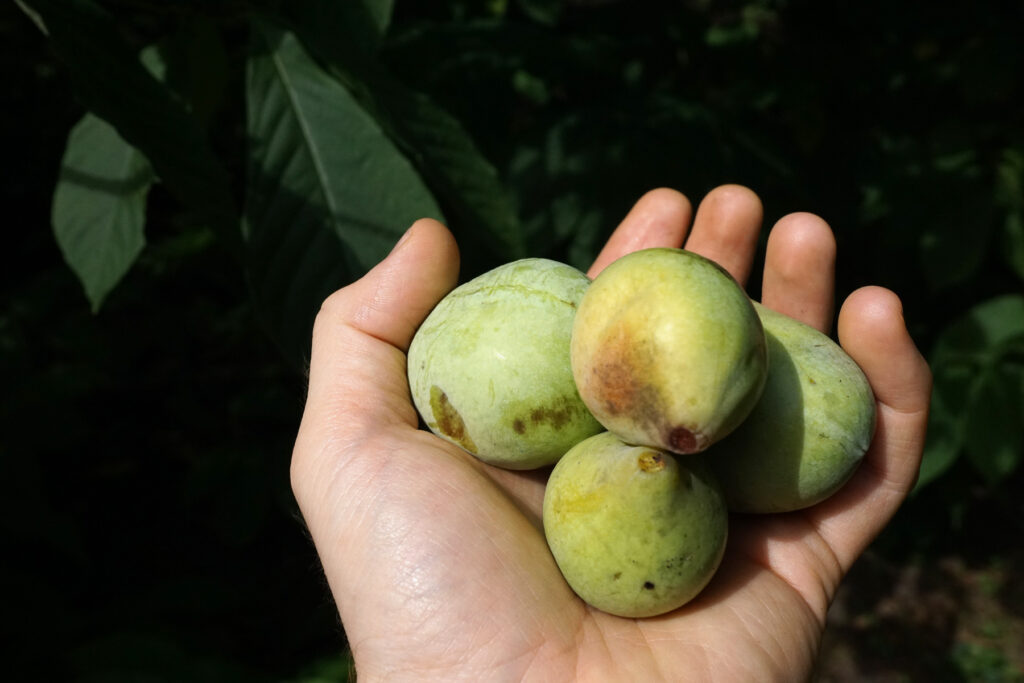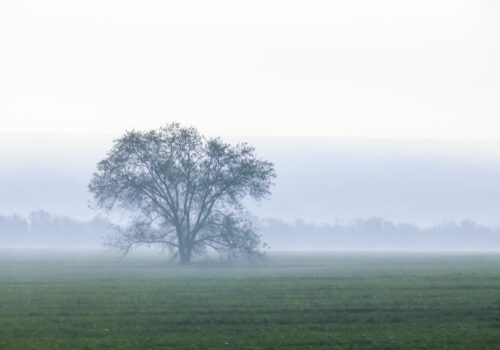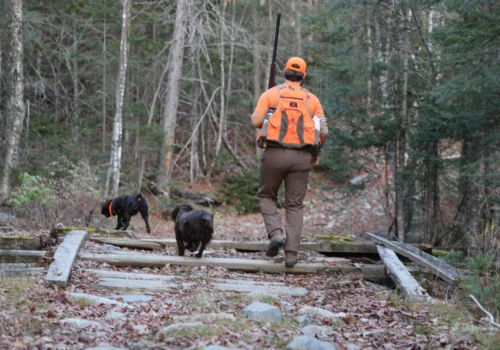Forgotten Trees: Paw Paw
By Robbie Perdue

If you’ve never heard of a paw paw, you’re not alone. This fruit is mostly forgotten, unnoticed where it grows wild, and eaten by very few. It suffers an interesting malady that has pushed many fruits into obscurity: it doesn’t fit the supermarket model.
The paw paw has a ripeness window so small that you almost have to eat them right from the tree. They certainly won’t last long on the store shelf. Ripe fruits that you try to take home bruise terribly, so shipping is mostly out of the question. No, the paw paw is just not cut out for the modern agriculture industry.

Ornamental use eluded the paw paw as well. The tree itself is quite pretty, with big tropical looking leaves. The flowers are dark reddish, brown and smell…. different. Instead of bees or butterflies these flowers attract carrion beetles and flies as pollinators. Maybe not what I’d want by my backdoor. Couple this with some difficult husbandry issues; long tap roots that prevent transplanting, seeds that need a cold cycle before planting, they’re not self-pollinating, and now you have a tree that’s just hard to propagate. Why bother?
But some people think it’s worth the trouble. The paw paw is the only temperate member of the custard apple family and is North America’s largest native fruit. The creamy fruit tastes somewhat of banana and mango. Heat will kill the impact of the flavor, but the fruit really shines in cold desserts like ice cream. I’ve had paw paw beer and I thought it was fantastic.
Now you know if you want to try some paw paw that the best way has got to be growing it yourself. There are plenty of nice cultivars available, you will have to get at least two different ones for pollination. The trees are naturally pest resistant with a lone exceptiption: the zebra swallowtail butterfly.
If growing paw paw trees is too much commitment and you desire quicker gratification you can order frozen paw paw pulp online. Yep, someone figured out a solution to the ripeness/bruising problem: just freeze the perfectly ripe, delicious pulp. I suggest making ice cream!
Of course, I can’t end the article without making note of the paw paws involvement in a historical incident.

The year was 1882. Ellison Hatfield is stabbed and shot by three McCoys. William “Devil Anse” Hatfield, Ellison’s brother, grabs the three and ties their fate to Ellisons. If he dies, they die. When Ellison does eventually succumb to his wounds, the Hatfields take them to a paw paw grove, tie them to the trees and shoot them.
Historical marker 2047 in eastern Kentucky is probably the only contact most people have with paw paws, but they still exist among the creeks and bottom lands of the south and midwest. If you look close enough and your timing is just right, you might just find treasure in those woods
Robbie Perdue
is a native North Carolinian who enjoys cooking, butchery, and is passionate about all things BBQ. He straddles two worlds as an IT professional and a farmer who loves heritage livestock and heirloom vegetables. His perfect day would be hunting deer, dove, or ducks then babysitting his smoker while watching the sunset over the blackwater of Lake Waccamaw.


You May Also Like

Eternal Echoes: A Haunting Hunt
October 23, 2023
A Few Favorite Gene Hill Quotes About Dogs
May 15, 2023